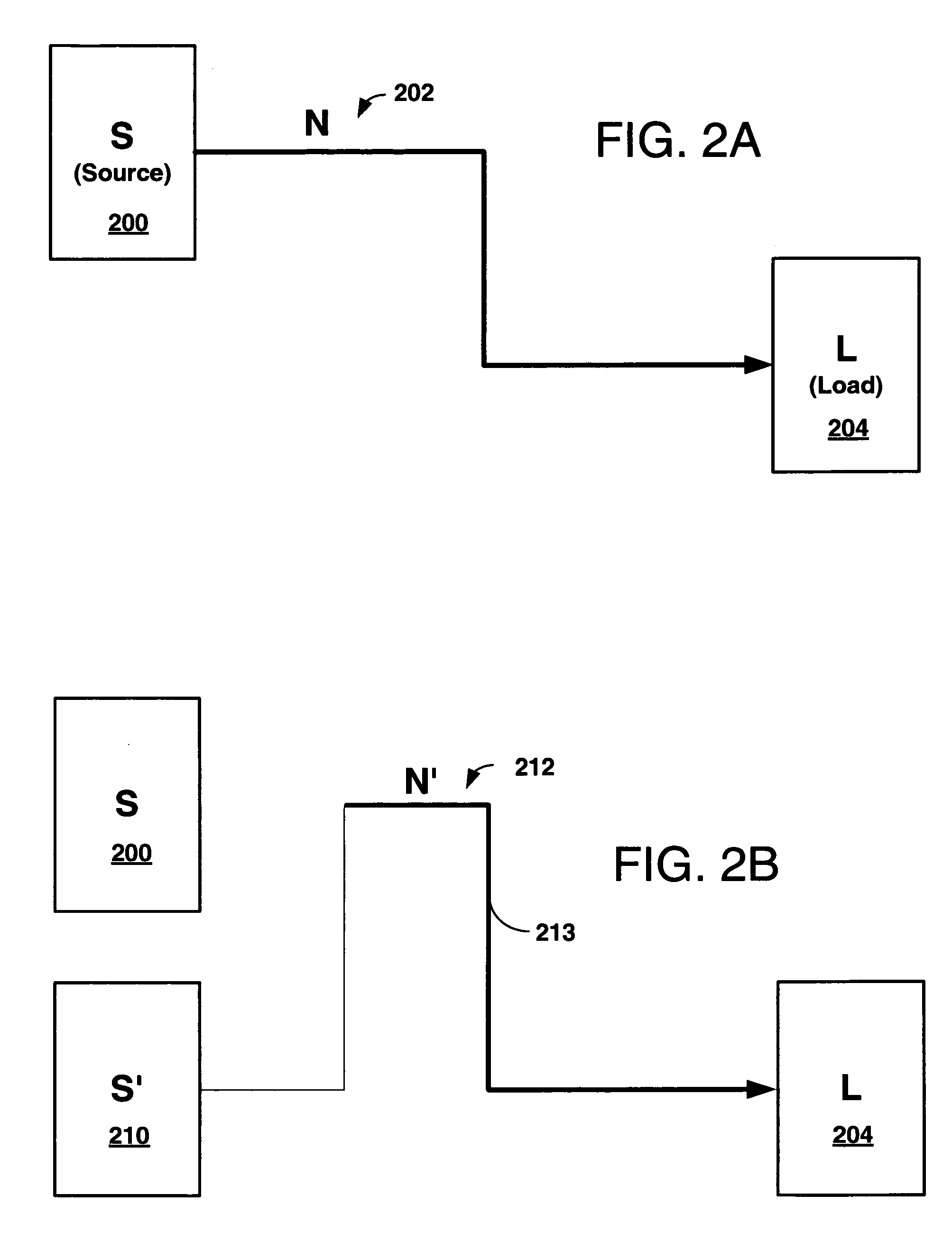Method to test routed networks
a routing resource and network technology, applied in the field of routing resource testing, can solve the problems of difficult testing of routing resources, impracticality of complex and time-consuming test procedures, etc., and achieve the effect of convenient testing, convenient testing, and convenient testing of the first portion
- Summary
- Abstract
- Description
- Claims
- Application Information
AI Technical Summary
Benefits of technology
Problems solved by technology
Method used
Image
Examples
Embodiment Construction
[0018]A routed network can be implemented in components of a general IC, or a more specific IC such as an FPGA. Similarly, the routed network can be provided with multiple IC components. Embodiments of the present invention can be implemented within a single IC, or using multiple ICs, whether or not the ICs include an FPGA. For convenience, however, the following description of embodiments of the present invention will be described with respect to a routed network provided within the confines of an FPGA. For reference, components provided in an FPGA are first described with respect to FIG. 1.
[0019]FIG. 1 provides an overview of typical components included in an FPGA. The components include a large number of different programmable tiles including multi-gigabit transceivers (MGTs 101), configurable logic blocks (CLBs 102), random access memory blocks (BRAMs 103), input / output blocks (IOBs 104), configuration and clocking logic (CONFIG / CLOCKS 105), digital signal processing blocks (DSP...
PUM
 Login to View More
Login to View More Abstract
Description
Claims
Application Information
 Login to View More
Login to View More - R&D
- Intellectual Property
- Life Sciences
- Materials
- Tech Scout
- Unparalleled Data Quality
- Higher Quality Content
- 60% Fewer Hallucinations
Browse by: Latest US Patents, China's latest patents, Technical Efficacy Thesaurus, Application Domain, Technology Topic, Popular Technical Reports.
© 2025 PatSnap. All rights reserved.Legal|Privacy policy|Modern Slavery Act Transparency Statement|Sitemap|About US| Contact US: help@patsnap.com



